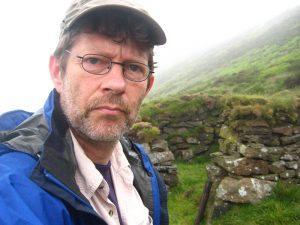 Nick Moyes is former Senior Keeper of Natural History at Derby Museum; co-author of The Flora of Derbyshire, and technical advisor to the Derby Cathedral Peregrine Project, which he helped set up. He is currently campaigning to get The Sanctuary LNR restored by Derby City Council, and advises on biodiversity action plans across Lowland Derbyshire. He is a keen walker, mountaineer and Wikipedian, and his family have been National Trust members for some 15 years.
Nick Moyes is former Senior Keeper of Natural History at Derby Museum; co-author of The Flora of Derbyshire, and technical advisor to the Derby Cathedral Peregrine Project, which he helped set up. He is currently campaigning to get The Sanctuary LNR restored by Derby City Council, and advises on biodiversity action plans across Lowland Derbyshire. He is a keen walker, mountaineer and Wikipedian, and his family have been National Trust members for some 15 years.
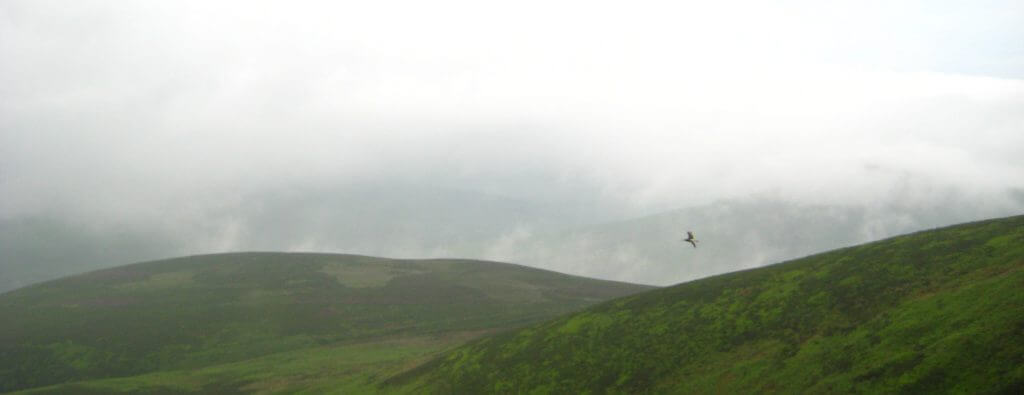
I awoke last Friday morning to two wonderful things.
It was 5:30am. Overhead, the piping call of a curlew roused me from my slumber amongst the soft bilberry and heather of Kinder Scout‘s plateau; the night’s rain and wind had finally passed over, and my bivouac bag had weathered it well. I had arrived late on Thursday night, just as darkness fell at Crookstone Knoll, and had made a low impact – albeit slightly elicit – stopover on Kinder’s extreme eastern end. I’d come to see for myself how grouse shooting was impacting on the landscape here.
The second wonderful thing to wake to was news on Twitter that the National Trust had just announced it was terminating the lease of one of its shooting tenants in the Hope Woodlands Estate (the bit I had been sleeping on!) This amazing news came after the release of a video of a camouflaged gamekeeper with a gun and plastic hen harrier decoy on land owned by the Trust. Pressure on the organisation to act had mounted over recent weeks, not only on my old colleague, Jon Stewart, who now works for the National Trust, but also on Helen Ghosh, the Trust’s Director-General, who many people had contacted to demand action. To their immense credit the NT had finally come out with a statement (reproduced here) in favour of evicting this shooting tenant on the grounds that their activities were no longer compatible with the Trust’s vision for the Dark Peak moors. This was wonderful news indeed. The long process of seeking a new tenant would begin in 2017.
All week I had been saying that I felt the next Hen Harrier Day on Sunday August 7th in Derbyshire needed a stronger, more clearly defined and achievable focus. And here now is the opportunity to ask (demand?) that the National Trust go one step further than their surprisingly wonderful statement last Friday.
We need to tell the National Trust to remove all the shooting butts from their land in
the Dark Peak SSSI/SAC/SPA (Special Protection Area). Kinder should be the start.
It makes no sense to me to spend immense sums of money on gully-blocking, re-wetting and restoring the western side of the Kinder Scout plateau, whilst on its eastern arm the shooting tenants (now presumably given notice to quit) have continued to burn the deep peat just to encourage heather for their grouse, and then dig pits for their trays of medicated grit to keep the birds healthy (prior, of course, to being shot by well-to-do lines of gunmen hiding in grouse butts after 12th August each year). I earnestly believe there should be no shooting whatsoever on any part of the Kinder Scout part of the Dark Peak SSSI/SPA. I would then like to see management for grouse-shooting removed from all National Trust land within the Dark Peak SSSI.
So, as I offered myself up as breakfast to the multitude of moorland midges, I made a note of the damage being done on Kinder in the name of driven grouse shooting. Below me at Crookstone Knoll, the biggest symbol of this was the line of grouse-shooting butts that emerged through the early morning mist towards me from the Snake Pass road. These symbols of greed, folly and moorland mismanagement really have no place at all today on the slopes around the Kinder Scout plateau. This part of the Dark Peak SSSI is one of our most heavily cherished ecological habitats, given special UK and European protection as an SSSI, an SAC and an SPA. Yet all around me there were signs of moorland habitat mismanagement – funded by HLS payments – but seeming to me to run totally counter to the good work being done elsewhere on Kinder by the National Trust, the Peak Park, and the Moors for the Future project. Numerous areas of burnt heather and white-tipped posts marked the location of plastic trays of medicated grit, many placed into holes dug into the ancient peat. Just look at the vast swathes of burnt moorland on the eastern side of the Kinder Scout plateau on this Google satellite view.
Kick the Butts Out Of Kinder Scout! No shooting on this part of the Dark Peak SSSI/SAC/SPA
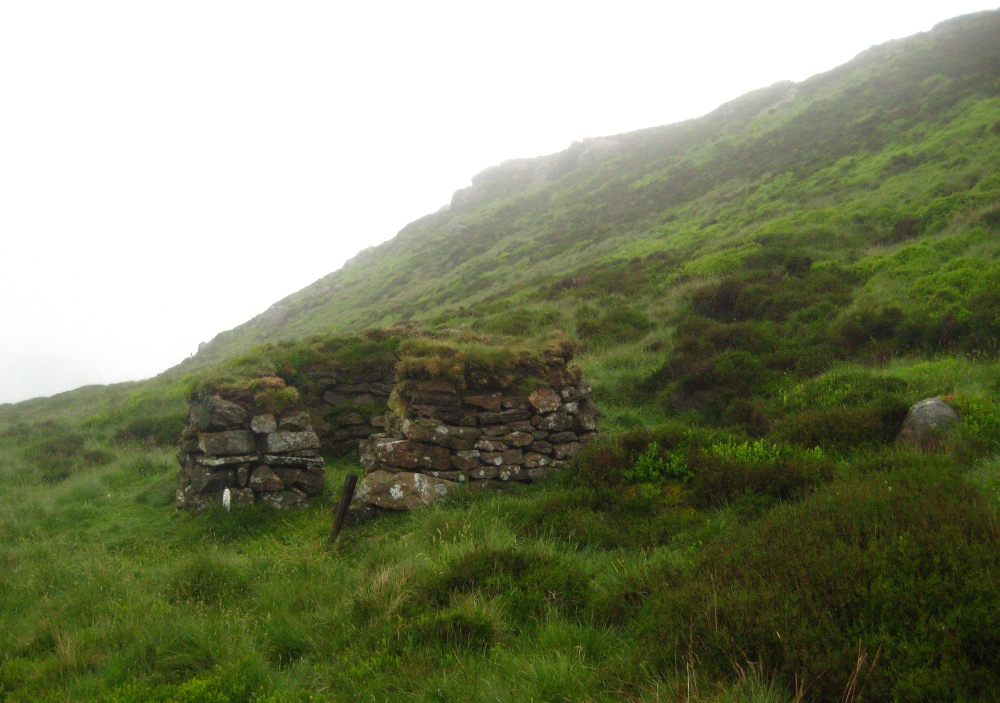
It was 1932 when the Kinder Mass Trespass took place. The common man demanded access to the wild landscapes that had hitherto been denied them. Today it is the gamekeepers and shooting tenants who are now the trespassers here. And this time there is no place for them – they have no moral right here, even if some do still have a lease. With their guns, their medicated grit, their moorland burning, their snares and their stink pits – and sometimes even their poisons and snipers – they trespass onto these landscapes and do our wild places no good. Evidence of the damage that intensive grouse farming causes was all around on this, the extreme eastern arm of the Kinder Scout plateau and SSSI.

The shooting butts should not be here at all; they make a mockery of the moorland restoration efforts being done further west on Kinder.
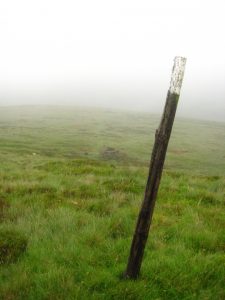
It would take just a few hours with a sturdy crowbar to Kick the Butts Out of Kinder Scout. We should seek to scatter these stones, or turn these places into simple cairns – monuments to the folly and anachronism of intensive grouse farming on what is undoubtedly the Peak District’s most well-known and valued wild place. We need the National Trust to take this further action in order to demonstrate a desire never to see grouse shooting on any part of the Kinder Scout again. It should create at least one shooting-free area on its land-holdings, and to do so on behalf of the vast majority of its members who, like me, care about a better landscape, rich in wildlife and delivering healthy ecosystem services for everyone’s benefit. Carbon sequestration by the peat; the retention of water and reduction of flooding downstream in the cities of Derby and Nottingham are just two of many services a more healthily managed moorland will deliver.
If you want to contact The National Trust you can email Dame Helen Ghosh, or Jon Stewart, and praise them for their action thus far, but why not also invite them to Kick the Butts out of Kinder Scout! and make this the first bit of the Dark Peak SSSI/SAC/SPA to be a completely lead-free zone?
If you want to join Hen Harrier Day 2016 in Derbyshire, do watch out for further details here, or follow the Hen Harrier Day Twitter feed for news and updates.
With Natalie Bennett from the Green Party attending Hen Harrier Day in Edale this year, as well as our new Police and Crime Commissioner, Hardyal Singh Dhindsa, now is the ideal opportunity to both publicly applaud the National Trust for taking a firm line with one of their wayward shooting tenants, but also to call for one more small, but achievable action: Kick the Butts out of Kinder Scout!
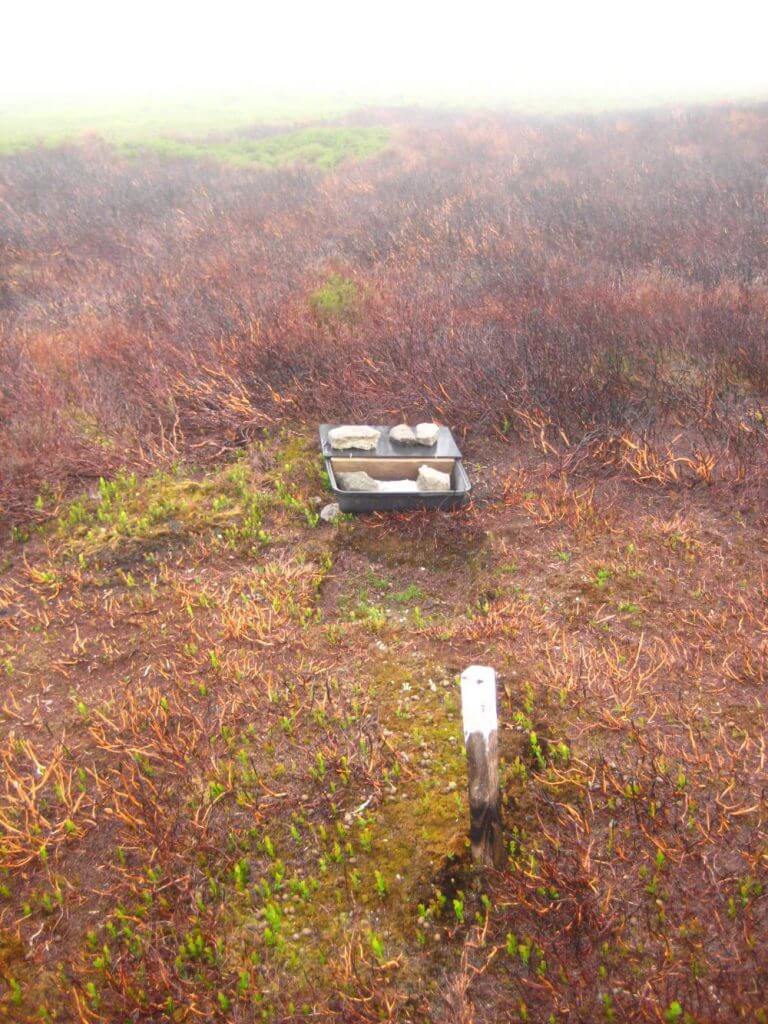
I want to see all moorland management for grouse-shooting halted on National Trust land within the Dark Peak SSSI/SAC/SPA. Removing all 53 of the shooting butts around Kinder Scout should be our first goal.
[registration_form]
Yes, lets stop driven grouse shooting here like everywhere else. Yes, lets symbolically ‘kick the shooting butts’ out of Kinder. However maybe we shouldn’t actually destroy the structures themselves – you mentioned a crowbar – as they may be valuable habitat for many creatures, and even a little shelter for the nature-friendly visitor. Perhaps just knock down one or two as a symbolic gesture?
m parry – I’d quite some to remain too – to remind us of the bad days. Children should ask their grandparents ‘What are those things?’ and be told the tale of how driven grouse shooting was overturned for the public good.
Good point, Mark, but would we actually want one thousand two hundred and twenty such reminders? That’s how many grouse butts there across the moorlands in Derbyshire and the Peak District at the moment (although I may have missed plotting a few.)
Here they all are on a satellite map: http://j.mp/28DO1eM
I’m not convinced that a monumental cairn would offer any more or less habitat for invertebrates and small mammals than the original grouse butt would have done.
Nick – just a token few would do! thanks for an excellent Guest Blog. See you at Hen Harrier day in Edale.
wow, that’s a monumental achievement mapping all those! I agree, we don’t want that many, but most cairns are a slap in the face of wildness, so, yes, lets just keep a few.
If there is any money in a pot marked High Peak Moors Vision and Plan I hope it would be spent wisely, achieving higher social value for ever, for everyone. Ripping-up any access tracks that interrupt and speed the flow of drainage from moorland might be better value for money – today’s butts could be allowed to become tomorrow’s archaeology. That seems appropriate for maintaining a continuous historical record on “a managed landscape that’s been created by man’s activity”, rather than expunging all traces of recent history.
Totally agree. That butt in the pic. looks like an interesting a micro-habitat. Leave it to decay into the landscape.
Nah. Fill the butts with soil and plant a tree in each of them. Rewild while kicking the grouse shooters out.
rewilding by tree planting is not the way to go.
rewilding = natural regeneration. Look at any abandoned old quarry.
A good guest blog. This is part of the response I got from Jon Stewart, when I asked why NT allows shooting on its land when it claims to be a conservation organisation?
“We recognise the importance of rural traditions, such as field sports, as part of the spirit of many of the places we look after. We allow them to take place where compatible with our aims of public access and conservation”.
To make more progress in this, we need to continue putting pressure on people like the NT, UU, Yorkshire Water, Bradford Council and NPs in getting grouse shooting stopped on land that they have responsibility for.
Good blog but doesn’t go far enough. The NT should have NO shooting on ANY of its land at all. It’s my land, our land, and which one of us gave permission to kill hares, birds of prey, stoats and foxes? Not me. Who of us wants just heather instead of a natural mix of flora bringing in a natural mix of fauna? Not me.
The clue is in the name National Trust. Read that again and tell me what’s not to understand.
They have made a small step in the right direction for which we are all grateful, but it must be a first step.
As for keeping the butts, I agree, we should keep them. I am constantly reminded when I am walking the beautiful coast of Lincolnshire, of the stupidity of man, by the wartime “shooting butts” that line our coast.
Keep them, look at them and remember that they represent criminal activity that the NT condones whilst allowing driven grouse shooting on its, our, land.
Somebody keeps ‘disliking, this stuff. What is it you don’t like about the blog or our posts? Why don’t you become part of the discussion?
For DGS to exist there has to be burning, there has to be an unnatural landscape, there has to be CRIMIAL ACTIVITY.
What is it you don’t understand about all this? Don’t just sit there and push the dislike button like a wimp, give us your views.
Ok, let’s make this easy for you.
The NT has just purchased a grand old hall with a beautiful collection of porcelain.
Hundreds of different pieces from all over the world. They have purchased this house with OUR money to preserve for the nation.
Then Dame Helen Ghosh went in with a baseball bat and smashed up the lot exept one priceless Ming vase.
She said that people would appreciate the single vase more than the whole collection and that the car parks would be full of expensive four x fours with all the toffs coming to look at this one vase. It would also help to keep out the riff raff who would’ve come to look at all the other pieces.
Just taken that from the Daily Mail.
Ok, no I didn’t, I made it up. But would the dislikers explain to me the difference.
Paul – deep breath! It’s OK. Don’t encourage them.
I disliked because of the extension from DGS to all shooting on any NT land.
Just one example; we’re overrun with deer – much as I’d prefer wolves we’re stuck with rifles to control numbers for now. Or would you prefer trashed woodlands, no regeneration, and no rewilding of the highlands? And deer numbers controlled “humanely” by starvation and traffic accidents? An animal welfare and nature conservation disaster in the name of “animal rights”.
I disliked because I don’t think shooting (ALL shooting as you advocated) is the simple black and white “I’m completely right always and everywhere and they are completely wrong always and everywhere” issue you present it as. Few things are ever that simple. Even banning DGS will have a few downsides (eg for upland waders) but at least we agree that that’s a price well worth paying.
Since you asked..!
As it happens, I was referring to DGS and DGS only. It doesn’t only happen on Kinder Scout!
Where did I mention all shooting?
Before you assume, I am not and have never said I was against all shooting. In particular, deer. Had you cared to ask, like you, I would prefer a natural balance, but since we’ve screwed things up so much, we will have to live with the consequences. As it happens, living in the Lake District for twelve years, you come to appreciate the damage they can do.
As for your ‘trashed woodlands’, well you don’t see that many woodlands too trash on a grouse moor do you? Think that’s part of the point.
Never assume, it just make an…..oh, never mind.
“Where did I mention all shooting?”
“NT should have NO shooting on ANY of its land at all”
Filbert beat me to it. If you only meant DGS then we’re on the same page! Unfortunately that wasn’t what you wrote, hence the misunderstanding.
“an unnatural landscape”
That would be pretty much everywhere
http://www.pnas.org/content/113/23/6388.abstract
I was once saved from being frazzled in a freak thuderstorm by being able to hunker down in a shooting butt…
Excellent, passionate blog. The Peak District is full of historical reminders of man’s activities over the years; let the butts become part of that narrative.
I agree Andy. While they stand they make reasonable shelters for eating a packed lunch on a windy day. I know – I’ve used them!
An excellent blog. Thanks.
I am interested, but dont have the skills seniority in the field or background to put forward a proposal to the NT as an alternative to driven grouse shooting.
I think the following are some of the key elements :
What are the requirements to get the same agripayments as a grouse moor gets and could they be achieved without actually having a driven grouse shoot?
Using this money and anything else that could be raised how would this moor be managed to achieve the changes I’m sure we all would like to see, and exactly what are these changes.
Whilst this would be best achieved by NGOs, say the RSPB or wildlife trusts, they are unlikely to wish to offend their grouse moors partners, at least openly, so another organisation would need to take the lead.
Is there a study or paper which contains any of these proposals?
Answers to Mark as another guest blog?
Alex – the answers are simple.
The NT should receive the same agri-envt funding as before. It may be a bit more complicated than that – but not really.
The loss of money is what we ‘all’ pay NT memberships for! The most profitable thing for them to do isn’t what the most nature-friendly thing is – that’s why we support them, and RSPB and Wildlife Trusts etc. I don’t want the NT to buy old houses if they can’t manage their land properly, sustainably, with my money. In practice, the loss of sporting income would be small and the potential loss of membership and reputation from getting this issue wrong is much higher.
I’m delighted to hear that, Mark.
I had not realised that the NT or others could receive the payments.
‘The NT should receive the same agri-envt funding as before’.
Spot-on. A dozen clicks of my mouse shows me that the National Trust currently has at least 6 combined ELS/HLS agreements on the moorland on or adjacent to Kinder Scout.
Agreement Ref: AG003691144. Area: 1641.42 ha. Value of payments over 10 years = £1,226,007.
AG00329386: 779.30 ha, £198,443
AG00400087: 652.80 ha, £474,161
AG00365875: 147.23 ha, £375,380
AG00369296: 1162.61 ha, £1,024,072
AG00369343: 1472.85 ha, £917,781
Total value of ELS/HLS payments = £4,215,844 or on average £421,584/year. There will be an element of front loading on some agreements due to ‘capital item’ projects (walling, fencing, grip-blocking etc), so not all the income will be in the form of annual revenue payments, however I would expect the annual revenue payments to be worth at the very least approx. £250,000 a year.
I think we can assume that they will also be claiming Basic Payment Scheme on at least 5000 hectares of the 5856.21 hectares under the six agreements listed above – allowing for ineligible features etc. Based on the 2015 BPS rates of approx. £47.48/ha, the NT should be expected to receive in the region of £237,400 a year.
Just to note that in order to receive these payment NT has to do various things that cost money.
So payment does not imply profit – they may well make a loss on delivering the required management. Nearly all the management I did under agri-environment schemes had a net cost to the conservation organisations I worked for, even after grant.
ps – thanks for doing the maths, Ernest!
It may be simpler than that. I’ve never managed a grouse moor, you’ll be pleased to hear, but generally agri-environment payments roughly cover the cost of doing the agreed management, although they tend to under-value the labour costs and especially the added costs of running a “nature reserve” type site with public engagement over a private area that happens to have some public access.
So if you wanted to simply stop messing the moor up – ie stop managing it for grouse shooting – your savings on costs would roughly equal, if not exceed, the lost payments. That’s how it should work anyway.
If you wanted to positively manage for something else, like wildlife, you’re probably going to spend a bit more net, but can get other income from donations, membership, charitable trusts, the lottery etc (just as the shooters get more income for profit from clients).
One thing we don’t know (it varies) is if the agri environment payments here go to the tenant or the NT as landowner. It’s possible that the agri-environment payments never went through NT’s books at all and were instead indirectly reflected in the rent charged. The arrangement will vary according to the specific site and management agreement.
Either way doing the right thing will probably cost NT money, but it’s probably the loss of the commercial rent that’s the big issue, not the agri-environment payments whoever they go to.
A really excellent guest blog.
Leave the stone butts, they make excellent shelter when having your piece and a brew on a dreich day.
Grouse butts also make a great place for a girl to have a wee! I have made excellent use of many of them – sorry if that puts any of you off your butties when sheltering on the moors on a windy day…….
Great article!
Keep the stone grouse butts I say, in time they will have some historical value and they are useful windbreaks. Interesting blog though.
seems to me there are far to many people on here with very narrow minded views, most of whom I suspect have Never had any thing to do with Farming or Countryside Management or for that matter anything to do with the Uplands of Britain.
Most of what you talk about is from a very bias point of view.
If every group of people who use the Uplands persude their particular interest in the way you do then the Uplands wouldnt be the place we all want and need, We all use the Uplands in different ways to achieve our personel satisfaction, so why should one group dictate what should happen on the Uplands.
Stop being so selfish and look at the wide picture.
BOGTROTTER2 – thank you for your comment and welcome! I have capitalised your name and added a ‘2’ as there is already someone who comments here under the name bogtrotter. You weren’t to know, being new here, but it’s fairer to both of you to try to avoid confusion. Hpe that’s OK.
“…….so why should one group dictate what should happen on the Uplands”
Exactly, that’s why we need to change upland management from being massively biased towards DGS.
“Stop being so selfish and look at the wide picture.”
Exactly, that’s why we need to change upland management from being massively biased towards DGS.
The wider picture is that it’s not just us that use the uplands. A wide variety of animals call the uplands their home & I’m afraid that one small group of people do all they can to unbalance the ecosystem in favour of Red Grouse that they then shoot.
How is it selfish to want ALL that use the uplands a fair chance.
And remember the law protects Birds of Prey, but the law is ignored.
Excellent comment.Hikes wanted to go on the moors and free access was obtained. Will they want to go there when the landscape has changed?
Whilst I do not support any action that breaks the law I ask the question
1 how many of the people who contribute to these outlandish views on here have ever worked or had any experience of Farming or Moorland Management.
2 how many of you have ever been involved in Heather Burning
3 how many of you have ever done any Walling or tree planting.
I have over 25 years experience in Upland Land Management and over that time have tried to balance the views and user groups demands on the countryside, together with understanding the pressures on the Farming community who for generations have worked the land to make it what it is today and who live and work the land 24/7 365 days a year.
I think the point you seem to miss, Bogtrotter2, is that some of us are actually very concerned at how some people who purport to manage the countryside for the greater good and who, as you say, have “for generations … worked the land to make it what it is today” have done such an absolutely appalling job of it for the rest of the population. Flooding in towns and villages downstream of grouse moors; suspended carbon in the water supplies that business and families there have to pay to have removed, rather than being naturally filtered out; raptors illegally exterminated from the moors; all other predators trapped or killed; ecosystem services in decline; natural capital in decline, too. When I walked the 40 miles of the Derwent Watershed in Derbyshire recently, it was quite easy to see from the lack of biodiversity where the upland land management had got the balance wrong, and where intensive 24/7 grouse management on the moors has been carried out for generations. Is that what you mean? In most cases this was definitely not National Trust owned-land. Elsewhere the environment was improving and, surprise, surprise, it is where the NT had been involved in upland moorland management (and sometimes by excluding sheep, too). My point was to call for the NT, as landowners, to go further to reduce the intensive management for shooting. Did I mention anything other than grouse-farming? No, I didn’t think so.
Nor did I see the relevance of any of your questions, unless it’s related to high-horse farming. So here are a few pointless questions of my own for those who contribute to outlandish moorland mismanagement and intensive grouse farming:
1) How many of you have ever reported yourself, a fellow grouse farmer or their employees for a wildlife crime?
2) How many of you have ever been involved in documenting and publishing data on the demise of our native wildlife?
3) How many of you have ever created or managed a nature reserve to help offset the losses of British wildlife caused by intensive farming and habitat loss since the 2nd World War?
I know: equally pointless questions to the discussion here, but there you go.